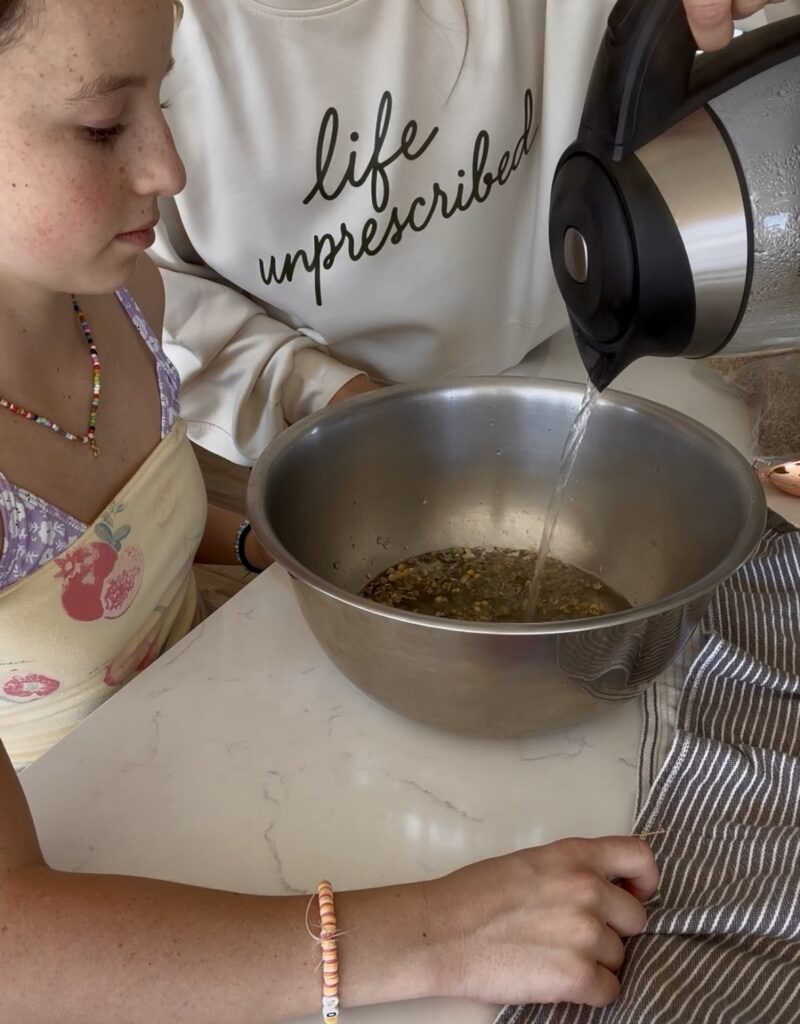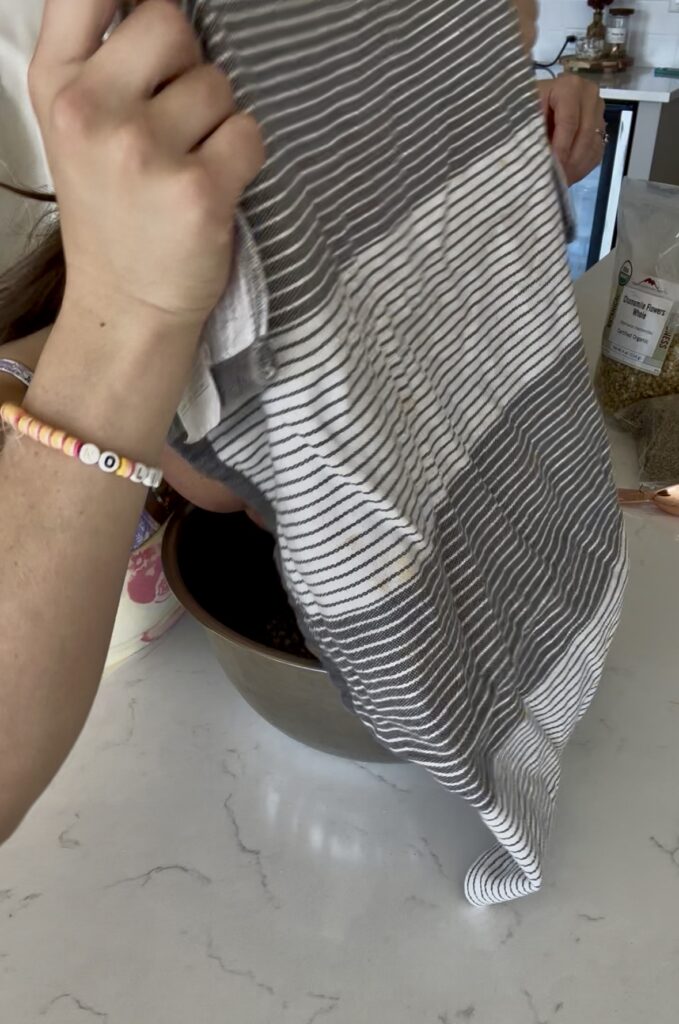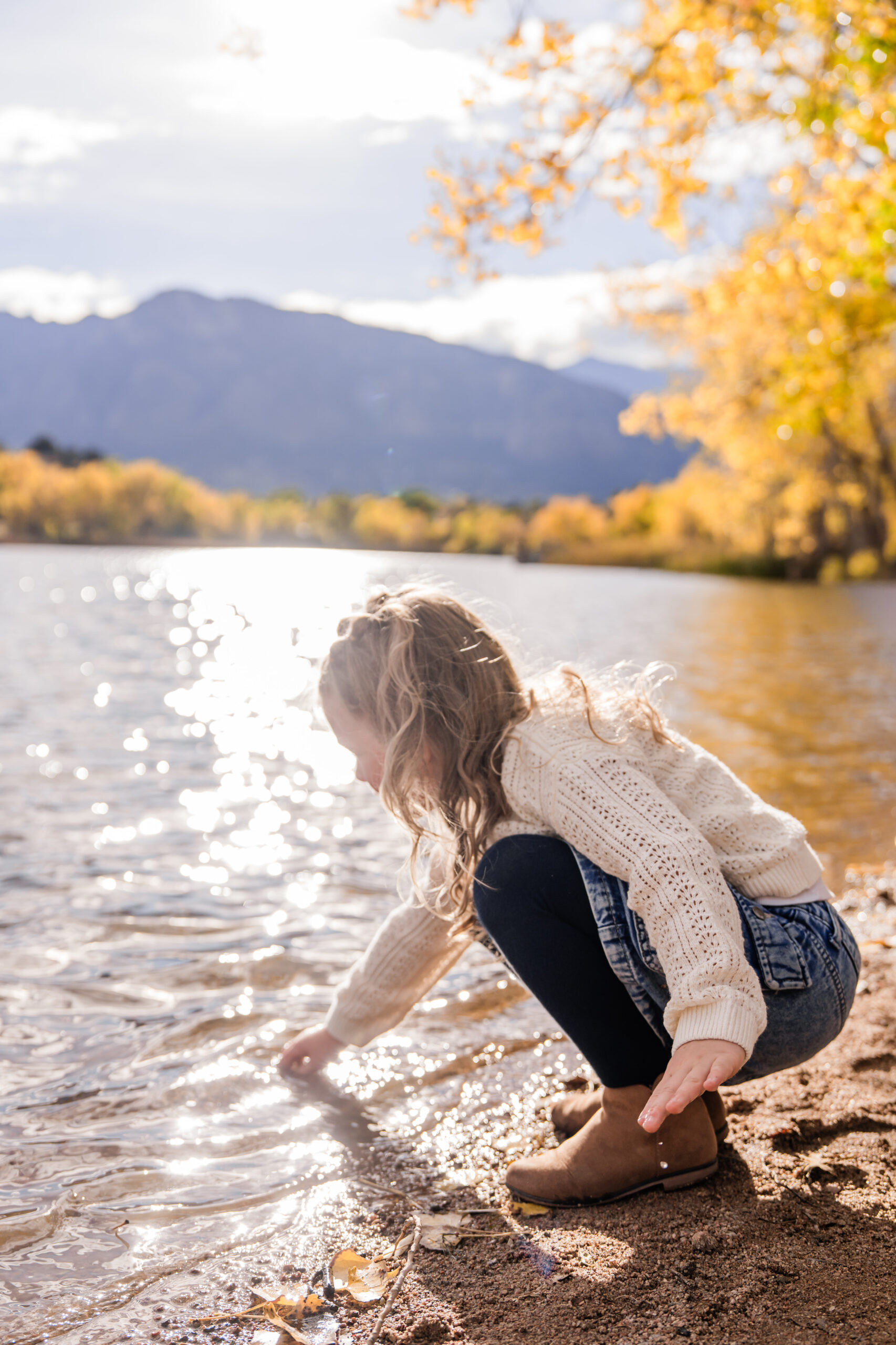Lately, I’ve been feeling a pull back to my naturopathic roots — the kind of medicine that’s gentle, simple, and really in alignment with nature. I’ve been reminding myself of the power of the basics: air, movement, sunshine, plants, and laughter.
As I’ve been rereading some of the original texts, like Nature Cure by Dr. Henry Lindlahr, I’ve found myself inspired all over again by the wisdom of those who came before us — the ones who built this profession on faith in the body’s own healing intelligence.
I’ve been slowly rebuilding my own personal apothecary at home: jars of loose herbs for tea, baths, and of course, herbal steams — a remedy as old as it is effective.
Herbal Steam for Congestion and Calm

This is the recipe I shared on Instagram. I like that it’s simple, familiar herbs.
Herbal Steam Inhalation Recipe
- 2 tablespoons each chamomile, echinacea, and lavender
- 1 quart boiling water
- Steep 3–5 minutes
Pour the infusion into a large heat-safe bowl. Drape a towel over your head, close your eyes, and gently lean over the bowl — just close enough to feel the warmth on your face. Breathe deeply and slowly for 5–10 minutes, taking breaks as needed.
For little ones, I usually place the bowl nearby while they play or read, so they can breathe the herbal vapors safely without leaning directly over the steam.
Strain and reuse the herbs up to 4 times. Repetition is key! Herbal medicine is highly effective if we repeat dosing 3+ times daily.

Rooted in the Water Cure Tradition
This humble bowl of steam is more than a home remedy — it’s part of a healing lineage that reaches back nearly two centuries.
Vincent Priessnitz, a 19th-century farmer from Gräfenberg, is often called the father of hydrotherapy. He used every form of water — cold compresses, baths, vapor — to stimulate the body’s natural defenses. Records from his clinic describe patients with chronic lung ailments recovering after daily vapor baths and outdoor exercise — treatments he called “hardening the system.”
Father Sebastian Kneipp, a Bavarian priest who expanded Priessnitz’s work, developed what became known as The Water Cure. Kneipp recommended steam inhalations with herbs like chamomile, thyme, and sage for “obstructed breathing.” In My Water Cure (1894), he even described a woman who overcame recurring pneumonia through these simple therapies: herbal steam to open the lungs, cold compresses to strengthen the body, and time outdoors to restore vitality.
Later, Dr. Henry Lindlahr, one of the founders of naturopathic medicine in America, carried these ideas forward. He believed that nature’s elements — air, light, water, and plants — were the true instruments of healing. Herbal steams are a perfect example of that philosophy: simple, sensory, and deeply supportive.
Herbs You Can Use
Once you get the hang of it, you can easily customize your herbal steams based on what you have on hand or what you’re trying to support:
- Chamomile – calming and anti-inflammatory
- Echinacea – supports immune defenses
- Lavender – soothes the nervous system and promotes rest
- Thyme – antimicrobial and excellent for clearing the lungs
- Peppermint – opens the sinuses and refreshes the senses
- Sage – antibacterial and grounding
- Rosemary – improves circulation and focus
I like to mix and match based on intuition — that’s the beautiful thing about natural medicine. It’s very forgiving. If you don’t get it exactly right…well actually, there is no such thing as exactly right.
Where to Buy Dry Herbs
All of my loose herbs come from Mountain Rose Herbs — a company I love for their commitment to quality, organic sourcing, and sustainability. Their herbs are vibrant, fragrant, and fresh — exactly what you want when you’re creating medicine from the earth.
A Healing Ritual
When I prepare a bowl of steaming herbs, I feel like I’m connecting with those early healers. It puts me at ease to feel that I’m trusting the body’s wisdom to pull through the illness.
Original healers didn’t chase quick fixes or fight symptoms into submission. They believed, as I do, that when we support the body, it knows how to heal itself.
So the next time someone in your home starts to feel stuffy, don’t rush for the medicine cabinet. Look to nature first.
Let the plants, the warmth, and the stillness do what they’ve always done: restore balance, one breath at a time.


